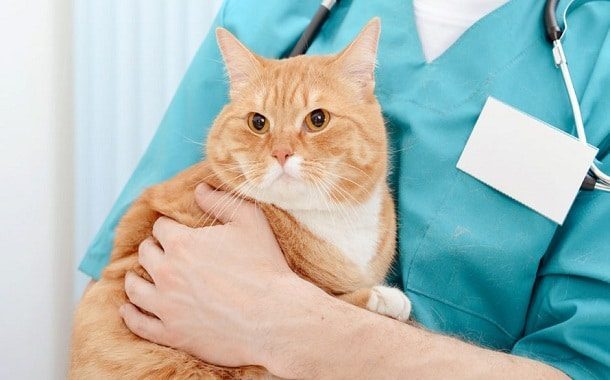How Much Does it Cost to Spay or Neuter a Cat?
Last Updated on March 15, 2024
Written by CPA Alec Pow | Content Reviewed by ![]() CFA Alexander Popinker
CFA Alexander Popinker
Deciding to spay or neuter your feline companion is one of the most important health choices you can make as a pet owner. But before scheduling the surgery, it’s natural to have questions about the cost – especially if money is tight.
While prices vary, some general guidelines can help you budget and plan. Read on to learn what influences the price, where to find affordable options, what’s included in the fee, the health benefits for your cat, and assistance programs that can help make this preventive care more accessible.
Highlights
- Average prices range from $200-$500, with males cheaper than females.
- Location, clinic type and cat’s age/health impact costs.
- Look for low cost clinics, shelters and assistance programs to save substantially.
- The surgery has important health and behavioral benefits for cats.
- Typical fees cover the surgery, meds, supplies, nursing care and e-collar.
- With planning and budgeting, this vital preventive care is within reach!
How Much Does it Cost to Spay or Neuter a Cat?
Most U.S. veterinarians charge between $200 and $500 to spay or neuter a cat. The average cost is around $250 for a spay and $200 for a neuter, according to recent surveys. But prices can be higher or lower:
- In urban areas or with specialty clinics, fees are often at the higher end, like $400+ per procedure.
- Rural areas and low-cost clinics generally charge at the lower end, with prices as low as $100-150.
- Kittens under 6 months old may pay up to 20% less since they usually have easier surgeries.
PetMD states that the cost of spaying a cat typically runs from $300 to $500 for a full-service veterinary practice, while neutering a male cat costs around $200. However, non-profit spay/neuter services can perform the surgery for around $50, depending on the location.
Texas Coalition for Animal Protection (TCAP) offers spay/neuter services for cats at a cost of $35 for males and $45 for females. They also offer additional services such as vaccinations and microchipping at an additional cost.
SPOT Society offers mobile low-cost spay/neuter services for cats and kittens in 20 metro Atlanta locations. The cost for a cat spay is $60, while a cat neuter is $40. The price includes spay/neuter, intra-operative pain management, and a rabies vaccine.
You should expect to pay more if your cat has medical issues that complicate the procedure or anesthesia. But ultimately, where you live and which spay neuter clinic you choose will be the biggest factors affecting the cost.
Veterinarians recommend spaying or neutering at around 5-6 months old – before the pet reaches sexual maturity. The surgery has important health and behavioral benefits for cats, while also helping control the homeless pet population. So this basic preventive care is well worth the investment.
Factors Influencing the Cost of Spay/Neuter Surgery
Several key factors can cause the price to remove a cat’s uterus or testicles to vary significantly. Being aware of these influences allows you to find the most affordable option in your area. Key factors include:
- Geographic location – Urban clinics generally charge more, rural areas are lower cost.
- Type of clinic – Full-service hospitals are most expensive, nonprofit/low-cost clinics have lower fees.
- Cat’s gender – Spaying a female is more complicated and may cost up to 30% more than neutering a male.
- Cat’s age and health – Additional vet monitoring for very young, senior or sick cats may add fees.
- Vet’s experience – Those with more years in practice often charge slightly more.
While the base surgery cost will be the largest portion of your bill, also ask about fees for exams, anesthesia, pain control, etc. Being an educated consumer helps manage costs.
Low-Cost and Subsidized Spay and Neuter Options
If the surgery cost seems out of reach for your budget, know that you have options. Many communities offer:
- Nonprofit or low-cost vet clinics that provide subsidized pricing for spay/neuter, often $100 or less even in urban areas.
- Free or discounted services through animal shelters and rescue groups. They work hard to reduce local pet overpopulation.
- Municipal or charitable programs that provide vouchers to cover part of the surgery cost at participating vets.
Check with local shelters for programs in your area. You can also search online for low-cost spay and neuter clinics. With a bit of research, you can likely find an affordable provider nearby to get your cat fixed.
Also read the articles about the cost of cat deworming and pet insurance.
The Many Benefits of Spaying or Neutering Cats
Some pet owners are hesitant about the surgery, but there are significant health and behavioral benefits:
- Population control – Millions of cats are euthanized annually due to overcrowding. Spay/neuter prevents more litters.
- Eliminates heat cycles – Neutering prevents noisy, stressful heats and roaming/mating behaviors.
- Less urine spraying/marking and roaming by males when neutered.
- Greatly reduces the chances of reproductive cancers later in life.
- Overall better behavior and less stress for a happier, healthier cat.
For both sexes, the right age for maximum benefits is 5-6 months – so make the surgery a priority at that age.
What’s Included in the Spay/Neuter Cost
When you receive a cost estimate from your veterinarian, here are some key components it will likely include:
- Pre-surgery exam – Assessing health status to ensure it’s safe to proceed.
- General anesthesia – Needed to fully sedate the cat during surgery.
- Administration of pain medication – For comfort during and just after surgery.
- The actual surgery – Removal of ovaries and uterus for females, testicles for males.
- Any medications or supplies used during the procedure.
- Post-operative nursing care, monitoring, and observation.
- E-collar – The “cone” to prevent licking/chewing of the incision.
- Take home pain medicine – Usually 3-5 days worth for after care.
Be sure to clarify exactly what’s covered so there are no surprises on the final bill. Also ask about optional components like microchipping or bloodwork that might add incremental fees.
Additional Expenses to Consider
 While the base surgery cost covers the key elements, you may need to budget for a few additional potential expenses:
While the base surgery cost covers the key elements, you may need to budget for a few additional potential expenses:
- Follow-up vet visit – Usually not required but may provide peace of mind to check incision site.
- Extra doses of pain relievers, nutritional gel or recovery aids if your cat needs a little extra TLC during healing.
- Costs to treat any post-surgical complications or reactions, which are uncommon.
- Added fees if your cat goes into heat before the surgery.
- Boarding/kennel fees if your pet can’t be alone after surgery.
Fortunately, most cats have a smooth, uncomplicated recovery. But be financially prepared just in case, and follow all post-care instructions closely.
Financial Assistance Options for Spay/Neuter
For low-income families, the cost of spaying or neutering a cat can be daunting. But many options exist for assistance:
- Local animal shelters or nonprofit clinics often have payment plans or sliding scale fees.
- CareCredit offers special financing for vet care, including spay/neuter.
- Credit cards with zero interest promotions can let you pay over time.
- Pet health insurance may reimburse part of the cost if you have a plan.
- Nonprofits like the ASPCA or Humane Society have funds or grants for those in need.
- Check with your county/city animal services for local programs.
With a little research, you can likely find a program or provider willing to work within your budget constraints to get your cat fixed.
Final Words
Pursuing spay or neuter surgery is one of the most loving, responsible choices you can make for your cat’s long-term welfare. With the many cost-saving options available today, you can confidently get your pet fixed and start enjoying the benefits.
Frequently Asked Questions
Is it cheaper to spay or neuter a cat?
In general, neutering a male cat is cheaper than spaying a female. The average cost to neuter a cat is around $200, while spaying typically costs $250 or more.
This is because spaying a female cat involves removing the uterus and ovaries through an abdominal incision. It is a more complicated surgical procedure that takes longer and requires more skill from the veterinarian.
Neutering a male cat simply requires removal of the testicles, which is a quicker and simpler surgery. However, costs vary between regions, clinics, vet experience levels, and other factors. With some shopping around, low-cost neuter options can be found for $100 or less in many areas.
Is it better to spay male or female cats?
Both male and female cats benefit greatly from being fixed, so the ideal choice is to spay or neuter all pet cats. However, if forced to choose between just one sex, most experts recommend prioritizing spaying females first.
Since one unspayed female can produce several litters of kittens per year, fixing females has a greater impact on reducing pet overpopulation. Spaying also eliminates female heat cycles and cancers of the reproductive organs.
So for community cat colonies and rescue groups with limited resources, spaying all the females is the top priority. But again, neutering males is still highly recommended too for behavioral and health reasons. The best scenario is to ultimately get both sexes fixed.
Will spaying calm a male cat?
Yes, neutering or spaying does help calm male cat behavior. Intact male cats are driven by the urge to mate, which makes them more prone to roaming, yowling/calling, fighting with other males, and urine spraying/marking.
Neutering reduces testosterone levels and thus decreases these restless, noisy and aggressive behaviors. Your male cat will likely become much calmer, gentler and more content after being fixed.
Male cats also face fewer health risks like prostate issues and testicular cancers when neutered. So the surgery is highly recommended for both behavioral balance and medical benefits.
Just be sure to neuter at the ideal age of 5-6 months old to get the full benefits. An altered male cat makes for a sweet, mellow companion.



I’m looking for a vet in my area. I live in Parkersburg WV
Thank you,
Lisabeth
Ps. My kitten is 8 months old
50 – 100 dollars to spay or castrate a cat, Really??? Our clinic is probably the cheapest in our area and that does not even cover our costs! Castration is $97 and spay is $147 and we need to raise prices so we are not loosing money!!